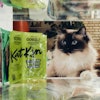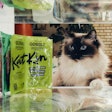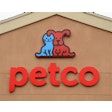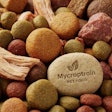
Pet obesity continues to be a leading health problem for millions of dogs, cats and other pets. Dog food formulators use various fiber sources in dog foods, especially weight-control diets. Increasing the amount of fiber in dog food leads to a sense of satiety in the animal, just as it does in human food. While there are many sources of fiber, cellulose if one of the most abundant as it derives from trees and other plants. Powdered cellulose is the most common form used in pet food. However, other types of cellulose haven’t been tested thoroughly in dog foods. Scientists conducted an experiment using three different types of cellulose in dog foods compared to the same formulation without those fiber sources. The researchers observed that none of the three cellulose sources reduced the digestibility of the diets. The addition of cellulose to dog foods did decrease the amount of overall energy eaten, a key to weight-control formulations.
Research on cellulose fiber type in pet food
Scientists with the University of Veterinary Medicine in Hanover, Germany and Mansoura University in Egypt performed the experiment. Eight Beagles ate one of four dog food formulations for 14 days. The four dog foods were the same except for the fiber sources. The dog foods contained either powdered cellulose, granulated cellulose or lignocellulose, along with a control diet made without cellulose.
All three fiber types led to lower caloric intake by the dogs, compared to the control diet. At the same time, palatability wasn’t decreased by any of the cellulose types. While fecal quality wasn’t affected among the fiber sources, all three cellulose fiber dog foods increased wet fecal output compared to the control.
“In view of the results of this study, lignocellulose can be used as an alternative to cellulose as a fiber source in wet dog food,” the scientists wrote in the journal Veterinary Sciences. “As lignocellulose reduces gross energy digestibility to the same extent as cellulose, it can also be used in dietary feed for overweight dogs. When feeding the regular amount of feed, less energy is utilized when using these fibers.”
















